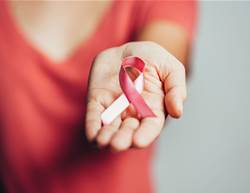- Nearly half of cancer deaths could be prevented with lifestyle changes, new research finds.
- An estimated 40% of all cancer cases and 44% of all cancer deaths in adults over 30 years old in the United States were attributable to specific lifestyle risk factors.
- Experts explain the findings and how to tweak habits to lower cancer risk.
With reports of rising rates of cancer in younger people circulating in recent years, it’s normal to wonder what you can do to lower your risk. But what if making a few tweaks to your daily routine could significantly help? New research shows that nearly half of cancer deaths could be prevented with changes to lifestyle habits.
A study published in CA: A Cancer Journal for Clinicians by the American Cancer Society looked at 30 types of cancer and 18 risk factors that could be changed by lifestyle habits. These included smoking, body weight, alcohol use, poor diet, lack of exercise, sun exposure, and missing cancer screenings, among others.
The study looked at data from 2019 and found that these lifestyle factors were linked to more than 700,000 new cancer cases and more than 262,000 deaths among adults aged 30 and older. This means that an estimated 40% of all cancer cases and 44% of all cancer deaths in adults over 30 in the US were attributable to the studied risk factors.
It is very important to understand that cancer develops when there is damage to cellular DNA, says oncologist Dr Nelly Awkar-Lazo. The known causes of DNA damage are mainly genetic and environmental, she says.
“When we talk about modifiable risk factors, we are referring to environmental factors that contain carcinogenic chemicals leading to DNA damage and cancer,” she explains. Some of these factors were mentioned in the study. Dr Awkar-Lazo says these may be:
Smoking and tobacco use in its different forms
The risk of lung cancer increases with the number of cigarettes smoked per day and the lifetime duration of smoking. Research has shown that more than 50 carcinogenic chemicals are linked to cancer, says Dr Awkar-Lazo. According the the study cigarette smoking was the leading risk factor for cancer, contributing to nearly 20% of all cancer cases and 30% of all cancer deaths.
Diet
A meal plan rich in red and processed meat is associated with carcinogenesis (cancer formation) and DNA damage through chemicals that are added to processed meat as preservatives, says Dr Awkar-Lazo. “Moreover, red meat is rich in heme iron, which can aid in carcinogenesis,” she says. On the other hand, a diet rich in vegetables and fruits, like the Mediterranean diet, has been shown to prevent cancer formation, she says.
Alcohol consumption
Research has shown an association between excessive consumption of alcohol and certain types of cancer, particularly in the oral cavity, pharynx, larynx, oesophagus, liver, colorectal and female breast, says Dr Awkar-Lazo. Ethanol and acetaldehyde, the primary products of alcohol ingestion, have been found to be carcinogenic, she adds.
Physical inactivity
There is strong evidence that physical activity reduces the risk of bladder, breast, colon, endometrial, oesophageal and gastric cancers, says Dr Awkar-Lazo. However, limited information exists on how the association between physical activity and cancer varies by cancer type.
Obesity
Research shows that excess body fat increases the risk for multiple types of cancer, including colorectal, oesophageal, kidney, pancreatic, post-menopausal breast and uterine cancer in women, says Dr Awkar-Lazo. “It is still unclear how obesity increases the risk of cancer, but it’s...believed that it’s due to the inflammation caused by visceral fat leading to carcinogenesis,” she explains.
Ultraviolet light
Excessive exposure to UV radiation directly targets cellular DNA and causes DNA damage, says Dr Awkar-Lazo. “Ultraviolet radiation from the sun is the primary cause of skin cancer, but excessive UV light from tanning beds is also harmful,” she points out. The risk is greatest in people who have lighter skin tones.
The bottom line
The good news is that the effects of many of these risk factors are reversible over time, says oncologist Dr Neil Iyengar. The first thing to do to lower cancer risk is to eliminate or minimise exposure to risk factors such as smoking, alcohol, obesity, poor diet, and inactivity, he notes.
“Smoking is still responsible for the majority of preventable cancers, so stopping smoking will have the greatest impact on lowering cancer risk. Excess body weight is the next risk factor, second to smoking,” he explains.
Fortunately, many of the interventions to reach and maintain a healthy body weight will also address several other risk factors including diet, exercise and alcohol, Dr Iyengar points out.
“Eating a plant-forward diet in which at least 80% of food intake is comprised of minimally processed, whole plant-based foods will help to lower cancer risk by improving diet quality, improving body weight, increasing fibre intake, and increasing intake of other nutrients that could have cancer-protective qualities,” he advises.
This study shows us that approximately 40% of cancers in the US might be preventable by improving several modifiable risk factors, says Dr Iyengar. These findings also tell us that the other 60% of cancers may not be preventable, he notes.
These risk factors are a few of many that are still being studied, adds Dr Awkar-Lazo. “It is also important to understand that maintaining a healthy body weight, cessation or limitation of alcohol consumption, cessation of smoking, and moderating a healthy diet, in addition to being physically active and avoiding sun exposure and/or applying sunscreen can substantially reduce the number of cancer cases,” she points out.
It is also crucial to talk to your doctor about when to start age-appropriate cancer screening that will help detect cancer at very early stages, says Dr Awkar-Lazo, which is essential to more effective treatment and a better chance of survival.










